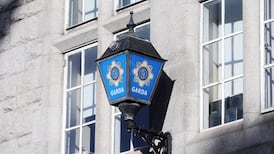Following in his father's footsteps, 46-year-old Paraic O'Brien has cut hedges in south Tipperary around Cahir and Clonmel for a quarter of a century, but he dreads the job during the winter months.
With hedge-cutting banned between February and September, except where overgrown hedges pose a risk to drivers and pedestrians, the bulk of his work takes place in the last months of the year.
It is the “worst time of year” for cutting, O’Brien says, in the wake of a decision by the Government to abandon plans to allow for hedge-cutting to take place during August on a two-year trial.
Disappointed by the action of the Minister for Culture, Heritage and the Gaeltacht, Josepha Madigan, O'Brien says: "You're battling against the winter weather. If there is poor visibility due to a week's rain, you have to stop."
The Minister’s decision, which has been supported by wildlife organisations, was taken on the grounds that August hedgecutting would contribute to the “increasing threats” to nesting birds and other wildlife.
O’Brien disagrees. Hedge-cutting makes up 90 per cent of his business, yet, he says, he has never seen a bird’s nest in a roadside hedge while out trimming.
“The majority of my customers wouldn’t cut them out of season anyway,” he says. “No one wants to be caught doing something they shouldn’t be.” When he has to, he is careful to do just the verge and “one run along the sides”, while leaving the top of the hedge alone, he says. *
Hazards
Tipperary County Council can request trimming in the summer under the Road Act 1993 to remove potential hazards.
Sometimes drivers stop to give out to him during summer work: “[They] have their own view and are against it. They don’t know too much about what is allowed,” he says.
“They tell me I am destroying the hedge, but I am not here to destroy any hedge. I am here to maintain it so it can grow again.” Greater clarity is needed so people understand the laws that are in place, he believes.
“In fairness to the farmers, they spend a lot of money getting the job done, and if they didn’t do it at all the roads would be in a right state,” says O’Brien, who has a FETAC certificate in hedgerow management and has studied how to cut safely and protect birds. O’Brien, from Keylong, near Cahir, says that he has often seen bad practice, with some hedges unnecessarily cut back.
“I would see it around the country. I could be driving and think, ‘my God, what is going on there?’” Training should be mandatory so wildlife can be protected and hedges maintained, he says.
‘Devastating impact’
Oonagh Duggan, of BirdWatch Ireland, says that out-of-season or excessive hedge-cutting is the "number one complaint" received from the public.
Hedge-cutting in August would have had a “devastating impact” on late-breeding species like the Yellowhammer, she says, adding that the exemptions already allowed under the Heritage Act 2018 can be abused.
Under the Wildlife Act and the EU Birds Directive all wild birds are protected, especially during breeding, or the rearing of chicks. It is an offence to disturb a breeding bird or to unintentionally destroy bird eggs, chicks or nests.
Tipperary Independent TD Mattie McGrath said the hedgerow “U-turn” decision was made by people who are “totally clueless” about rural Ireland and will “endanger human life”.
Independent Kerry TD Danny Healy-Rae agreed, branding the Minister’s decision as a “scandal and a disgrace”.
“I am 100 per cent for wildlife, but our roads must be kept safe,” he said, “Some poor person is going to get killed on our roads because of a branch.” Farmers and truckers are losing mirrors, while cyclists are being forced out into the middle of the road, he added.
Roadside hedge-cutting should be allowed all year on safety grounds, he argued. Existing laws allow landowners to take “reasonable steps” to ensure hedges are not a hazard. “[However], if anyone comes out now to cut a hedge they are reported,” he said.
* This article was amended on July 22nd, 2019












